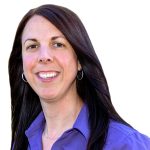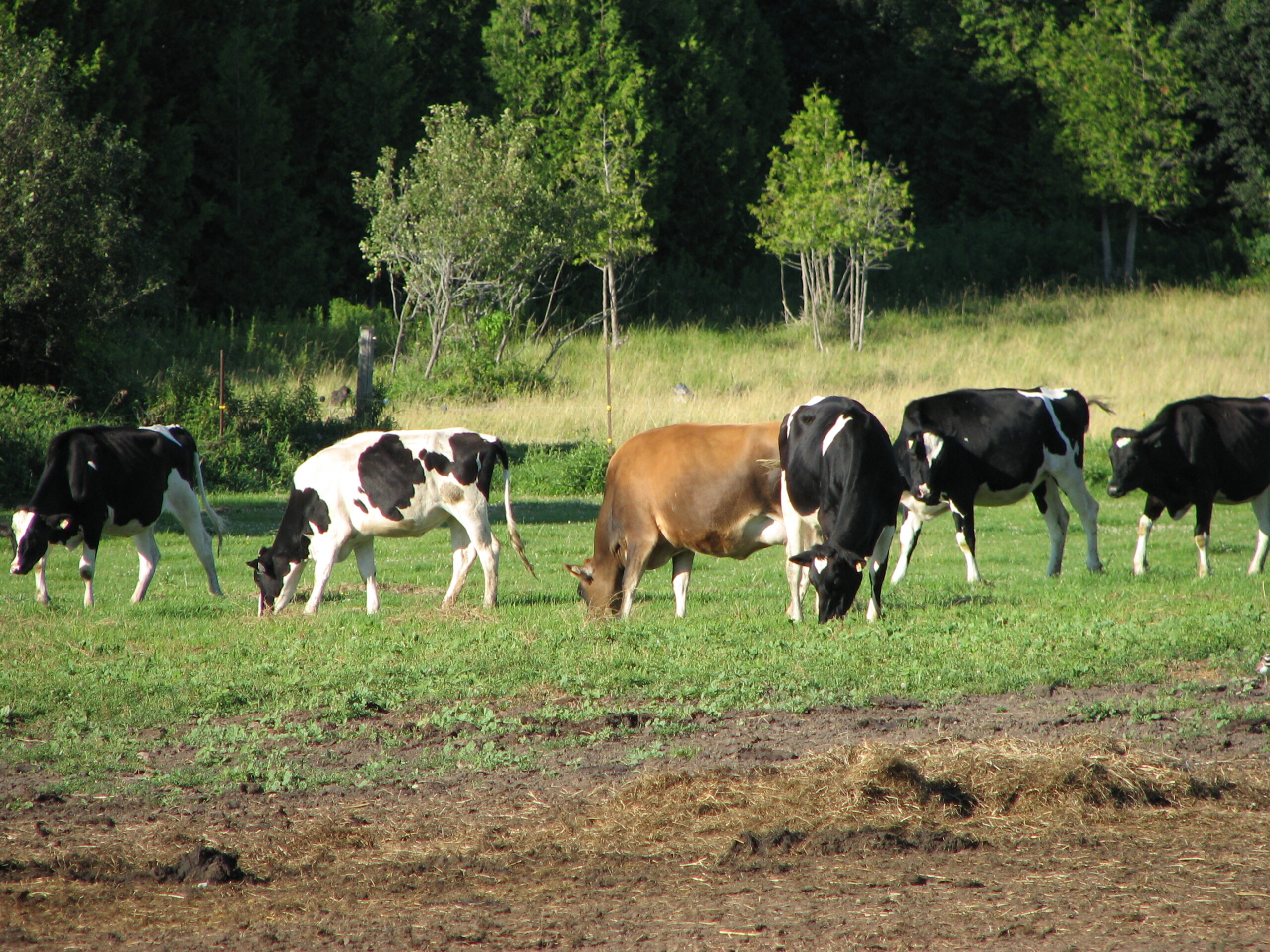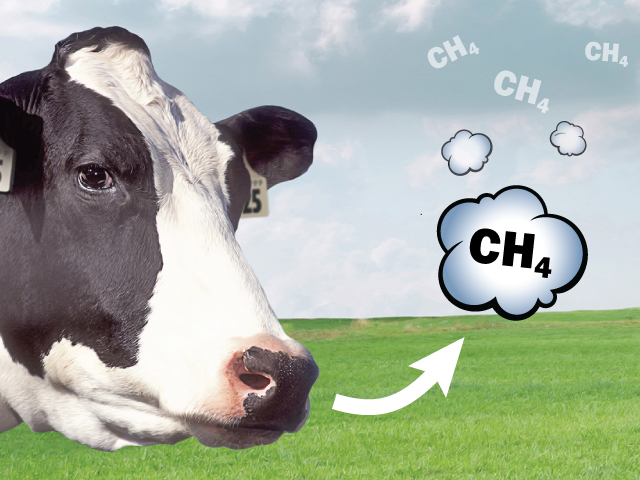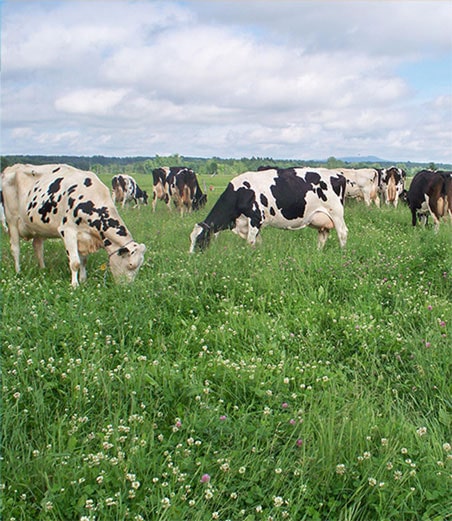Sustainability Index for Ferme Claude Larocque Inc.
- December 9, 2021
- Le Producteur de Lait Québécois Magazine
At Ferme Claude Larocque inc., sustainability is important. For Claude, Joanie and Alexandre Larocque, a sustainable operation means healthy animals that calve well year after year and remain in the herd for a long time.

From left to right : Joanie Larocque, Andrée Chicoine, Claude Larocque and Alexandre Larocque.
One of their goals is to maintain the percentage of cows in their third lactation or greater at over 50 per cent. They have already made considerable progress on that score, with the herd going from 39 per cent of cows in their third lactation and greater in 2018 to 51 per cent in 2020. To maintain that level, they may need to monitor the number of yearling heifers they breed
“We’re aiming for a heifer/cow ratio of 0.5 to 0.53. When we run out of room to house the heifers, it’s a sign that we need to sell a few,” Mr. Larocque explains.
Does having more mature cows require managing the herd differently? According to the Larocques, prevention is key, especially when mature cows are calving. “When I know I have an older cow that’s going to calve, you can be sure that I check my surveillance cameras more often,” Joanie says. They also administer calcium boluses as a preventive measure. Alexandre stresses the importance of feeding the cows quickly at calving, offering silage and water as soon as calving is done. One of the Larocque family’s many projects is to have their free-stall-housed cows calve in bed pack pens. In the meantime, they make sure their close-up cows have the bigger stalls, and they don’t skimp on the bedding.
“All the little extras are worth it,” says Mr. Larocque, “because in the end they produce more milk, which pays for itself after the second lactation.”
And what about SCC in all this? Rigorously managing udder health is hardly a new concept for the Larocque family! Milking order, vaccination against mastitis, and careful selection are part of their routine, and reflected in their results. Over the past three years, their somatic cell count has decreased, from 131 000 to 105 000, as the average age of the herd has risen.
In 2012, the Larocques made improvements to their housing by increasing the size of the free stalls for their yearling heifers, and fitting out a free-stall pen for the dry cows. The heifers are thriving, and cow fitness has improved. Last year, fans were installed above the cows to keep them cool during periods of heat stress. And investments to the dry cows are next in line. The benefits the Larocques have seen in terms of feed intake have been enough to convince them.
How do the Larocques intend to use the Sustainability Index? They explain that they will need to get to know the Index better and see it as a complementary tool to the Herd Management Score (HMS), which is more of a production indicator. They believe the Sustainability Index will help them identify areas of improvement.
One thing is sure, as Mr. Larocque so rightly says:
“Good, long-lasting cows are the mark of a viable operation!”
Ayrshire herd
Annual average: 10,142 kg
Calving interval: 394 days












